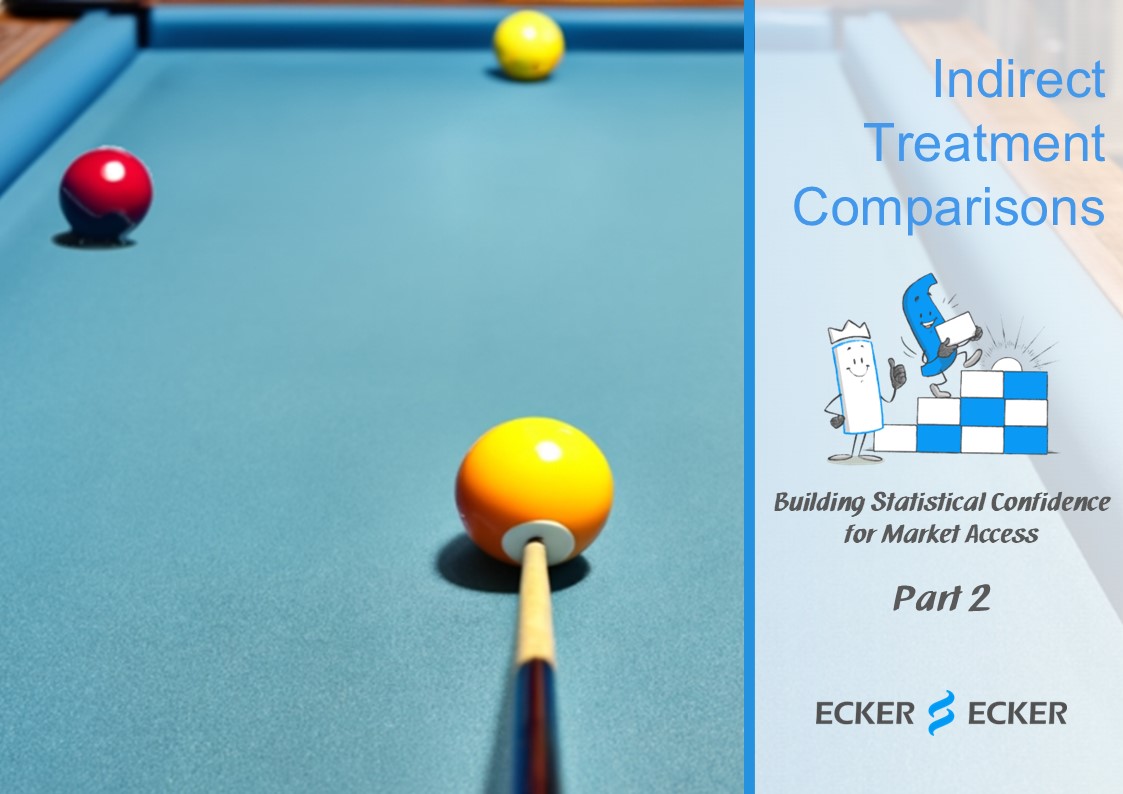Indirect Treatment Comparisons

What does an indirect comparison have to do with pool? 🎱📊
In HTA, we often face a crucial challenge: How do we compare treatments that have never been tested head-to-head?
Like in a game of pool, sometimes you don’t have a straight shot. But we can bounce off another ball to score a point. This is where Indirect Treatment Comparisons (ITC) come in. They help fill the evidence gap when no direct comparisons exist.
Why Are ITCs Necessary?
✅ Bridging Evidence Gaps – Clinical trials don’t always compare all relevant treatment options directly.
✅ Supporting Market Access – ITCs provide the comparative effectiveness data needed for HTA and pricing decisions.
✅ Optimizing Treatment Choices – Patients and physicians need reliable comparisons to choose the best therapy.
Challenges in ITCs
⚠️ Exchangeability Assumption – The studies included must be comparable in terms of patient populations and study designs.
⚠️ Heterogeneity and Bias – Differences between trials (e.g., endpoints, patient characteristics) can affect validity.
⚠️ Choice of Methods – Selecting the right statistical approach is critical for robust comparisons.
Statistical Methods for ITCs
📊 Bucher Method – A simple and widely used method that derives an indirect estimate based on a common comparator.
📊 Network Meta-Analysis (NMA) – Extends ITCs by combining data from multiple studies in a statistical network.
📊 Population-Adjusted ITCs (MAIC & STC) – Adjust for differences in patient populations using individual patient data.
Take Home Massages
🗝️ ITCs are a key component of evidence-based decision-making; especially in EU HTA.
⚠️ But using them requires careful methodological considerations to ensure reliable and unbiased conclusions.
➡️ So, get in touch with Ecker + Ecker if you plan to conduct an indirect comparison.
Stay tuned as we continue unlocking the Power of Statistics💪